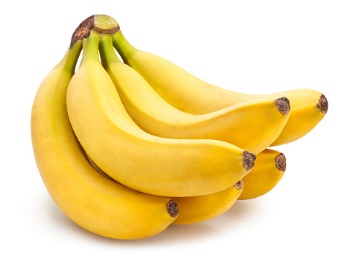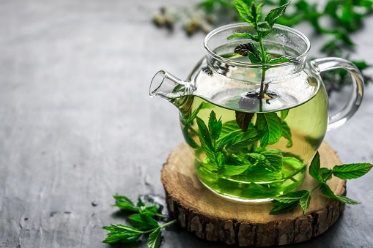12 Best Foods You Should Eat for Headache : Avoid Drugs

Headache are a common source of discomfort. There are many different types of headaches, and they can be temporary or intermittent.
Headaches may be exacerbated by food and drink. Water, antioxidant-rich foods, and caffeine-containing ingredients may be especially beneficial for headaches.
Other foods can cause headaches. Regular headache sufferers can work with their doctor to identify any underlying causes, such as identifying and eliminating trigger foods, to help relieve their headaches.
This article examines how various foods affect headaches and explains how to identify food and drink-related headache triggers.
Here are 12 best foods for headache you Should Eat.
Definition of headache
Headaches are pains that affect the head. Doctors categorize headaches based on the type of pain and the location of the pain.
Headaches can be classified as either primary (appearing on their own with no associated conditions) or secondary (appearing as a result of an underlying condition).
The International Classification of Headache Disorders aids in the classification of over 150 different types of primary and secondary headache disorders.
Some of the more common headaches are:
Migraine: Migraine is characterized by intense throbbing pain in one area or side of the head or neck, as well as other symptoms such as sensitivity to light and sound, nausea, and vision changes.
Tension headache: A tension headache, also known as a stress headache, causes mild to moderate dull pain. Some describe the sensation as if a band has been tightened around their head.
Cluster headache: A cluster headache is characterized by intense pain on one side of the head or around one eye, and it may be accompanied by other symptoms such as nasal discharge or tearing eyes.
Sinus headache: A sinus headache is a secondary headache caused by inflammation-induced pressure buildup. It is frequently associated with other sinus symptoms such as congestion or runny nose, facial swelling, and itchy eyes.
12 best foods for headache
1. Bananas provide you with energy when you need it.

Looking for something quick and easy to help prevent a migraine attack or an episode of hypoglycemia, which could result in a headache? Brown recommends eating a banana instead of highly processed foods like granola bars or candy.
“Bananas are a great food for quick energy recovery, and they’re high in magnesium, which can help with headaches,” she explains.
Bananas are approximately 74% water, so they provide hydration benefits as well, according to Brown.
2 Watermelon contains fluids that keep you hydrated.
Watermelon is classified as a vegetable due to the way it is grown, though some argue that it belongs firmly in the fruit category due to its sweet flavor and higher sugar content.
Watermelon contains a lot of water (surprise!). According to the National Watermelon Promotion Board, it’s 92 percent water. Getting plenty of water — both by drinking it and eating foods high in water — will help you stay hydrated.
According to Brown, getting enough fluids is important for all aspects of health, including migraine. According to the American Migraine Foundation, dehydration is a trigger for one in every three migraine sufferers.
“Many fruits and vegetables can be hydrating, and the fresher they are, the higher the water content,” Brown says.
3. Magnesium and fiber are provided by three seeds and nuts.
According to Sarah Thomsen Ferreira, RD, MPH, a registered dietitian with Cleveland Clinic’s Center for Functional Medicine in Ohio, magnesium deficiency is one of the most common nutritional causes of persistent or cluster headaches.
“One of the best ways to keep these headaches at bay is to prioritize ample amounts of magnesium-rich foods daily,” Ferreira says.
According to Ferreira, magnesium-rich foods include flaxseeds, sprouted pumpkin seeds, and chia seeds. Pumpkin seeds are also high in fiber, which helps to prevent the constipation that can accompany migraines. She also claims that cashews are high in magnesium.
4 Herbal Teas Provide Multiple Headache Relief

According to Brown, tea can help with overall hydration, which can prevent or relieve a headache, and there are other benefits depending on the type of tea.
“Peppermint can help relieve sinus pressure,” says Brown. According to the American Migraine Foundation, sinus congestion and pressure are common symptoms of a sinus headache caused by inflammation and swelling of the sinuses.
“Peppermint essential oil is used to treat headaches and migraines.” “You could put peppermint oil or fresh peppermint in a cup of hot water and inhale the steam as well as drink the liquid,” Brown suggests.
According to a 2019 study published in the International Journal of Preventive Medicine, a drop of diluted peppermint oil dripped into the nose was effective in reducing the intensity of migraine headaches in approximately 42 percent of participants who tried it.
According to Brown, there is some evidence that ginger tea can help with a tension headache.
In addition, according to a study published in Phytotherapy Research, drinking a half teaspoon of powdered ginger in warm water helped reduce migraine severity.
5 Ways Coffee Can Cause or Stop a Headache
Caffeine is found in coffee and is added to some headache medications. Coffee, on the other hand, can cause “caffeine rebound” or a caffeine withdrawal headache, according to the National Headache Foundation.
Brown recommends a cup of coffee to relieve this type of headache. “Keep in mind that caffeine can stay in your system for up to five hours,” she says. She adds that for some people, this may result in an afternoon headache after their morning cup of coffee wears off.
If your caffeine consumption is causing withdrawal headaches, Brown suggests cutting back by drinking “half caff” or decaffeinated coffee. “Even decaf coffee contains caffeine,” she adds.
6 Chocolate Can Ease Caffeine Withdrawal Symptoms
With a laugh, Brown says, “Everyone wants to hear that chocolate can help with a caffeine withdrawal headache.” “Some people believe chocolate is its own food group,” she says.
According to ConsumerLab.com, an independent company that tests health and nutrition products, most dark chocolates contain 40 to 50 milligrams of caffeine per 112 ounce serving, which is roughly the same amount as a cup of green tea and roughly half the amount as a cup of regular brewed coffee. Depending on the individual, a serving of dark chocolate may be sufficient to alleviate a caffeine withdrawal headache.
7 Berries Could Help With Sinus Pressure

“Eating foods high in antioxidants can help to relieve sinus pressure over time,” Brown says. Berries such as blueberries, strawberries, blackberries, and raspberries are all excellent choices.
Smaller fruits are more likely to be contaminated by pesticides, so Brown recommends purchasing organic berries whenever possible.
8 Mushrooms That Could Improve Gut Health and Prevent Migraines
According to Brown, headaches can occur as a result of either absorption issues in the lower intestine or leaky gut, also known as increased intestinal permeability. “Foods high in riboflavin (also known as B2), such as mushrooms, quinoa, nuts, and eggs, can help with that,” she says.
Riboflavin has been shown in studies to help prevent migraines. The American Academy of Neurology’s Quality Standards Subcommittee and the American Headache Society concluded that riboflavin is “probably effective” in preventing migraine headaches
9 Yogurt hydrates the body and may improve gut health.
Many migraine sufferers have gastrointestinal symptoms, including constipation. According to Brown, “dehydration can contribute to headaches and constipation.”
According to her, plain yogurt is a probiotic food that can help with both issues by promoting gut health and serving as a source of hydration.
Brown recommends almond or cashew yogurt. “Dairy products can aggravate sinus pressure and headaches in some people,” she says.
10 Broccoli May Aid in Migraine Prevention
According to Brown, changes in hormone levels can cause headaches, particularly in women who suffer from menstrual migraines or headaches. According to the Migraine Research Foundation, falling estrogen levels just before menstruation can set off an attack.
Because of their estrogenic effects, cruciferous vegetables would benefit women suffering from this type of migraine, according to Brown.
Cruciferous vegetables contain phytoestrogens, which are hormonally active compounds that can have estrogenic, or estrogen-like, effects in humans — or, conversely, antiestrogenic effects. Some phytoestrogens’ antiestrogenic effects are thought to reduce a woman’s risk of certain types of cancer by lowering her exposure to her own estrogen.
Some research, cited in a February 2021 review in Climacteric, suggests that phytoestrogens improve bone mineral density and cardiovascular risk markers in postmenopausal women — effects that estrogen would be expected to have in premenopausal women.
According to a review published in Neurological Sciences, phytoestrogens may also help to prevent menstrual migraine attacks in premenopausal women.
“Broccoli, Brussels sprouts, bok choy — all of these can be very beneficial if you include more of them in your diet,” Brown says.
11 Spinach and Swiss Chard Are Magnesium-
Rich Spinach and Swiss chard are high in magnesium, which can help reduce or even prevent migraines in some cases, according to Brown.
According to the Association of Migraine Disorders, several studies have found that many people with migraine have low brain magnesium levels, and many people with migraine take magnesium supplements in addition to their migraine medications.
Belinda Savage-Edwards, MD, a neurologist in Huntsville, Alabama, stated at the 2021 Migraine World Summit that supplements should supplement, not replace, the food you eat, and that a wide variety of healthy foods contain magnesium.
Before beginning any type of supplement for migraine or any other health condition, consult with your doctor.
12 Black Beans Help Maintain Blood Glucose Levels
According to Ferreira, reactive hypoglycemia, or a drop in blood sugar after eating that is dependent on the type of food consumed, can cause headaches. If your headaches worsen after long periods of fasting or start soon after eating, she recommends switching to carbohydrates, which will keep your blood sugar levels more stable.
“Black beans, squash, quinoa, and root vegetables are carbohydrate types that can help with more stable blood sugar,” says Ferreira.
Such foods have a low glycemic load, which means that a typical portion raises blood glucose levels only slightly to moderately. White rice and highly processed breakfast cereals, on the other hand, tend to raise blood glucose levels more quickly.
Different Causes of Headache
1. Water deficiency
A headache may occur as a result of dehydration.
Some people get afternoon headaches from dehydration. Dehydration headaches can occur after a long meeting without water, skipping lunch, or drinking a lot of coffee but no water.
When a person is dehydrated, they may also experience the following symptoms:
- mouth, lips, and throat dry
- Infrequent urination or dark urine
- dizziness
- irritability
2. Muscle tenseness
The most common type of headache is a tension headache. They occur when the muscles in the neck, shoulders, or jaw become tense, causing pain to radiate to the head.
Tension headaches typically begin slowly and worsen over several hours. This type of headache may occur after spending several hours in the car, at the computer, or in an uncomfortable position.
A person suffering from a tension headache may experience tense muscles in their neck or shoulders. They may also discover that massaging these muscles either relieves or aggravates their headache.
Tension headaches are not harmful, but they can last for several hours or even days. Stretching the head, neck, and shoulders, as well as taking frequent screen breaks and practicing deep breathing, may all be beneficial.
3. Migraine
Migraine headaches are a type of neurological headache. A migraine can be caused by changes in nerve pathways, neurotransmitters, and other brain chemicals.
With a migraine, some people experience visual disturbances, sensitivity to light, and unusual sensations in their bodies. People may feel nauseated and vomit in some cases.
A migraine can strike at any time of day. Certain smells, sights, sounds, or foods may cause migraines in some people.
People who get migraines at the same time every day should keep a log of their symptoms and activities to help identify potential triggers.
4. caffeine
Caffeine can cause headaches in some people. It may also contribute to dehydration, potentially exacerbating a headache caused by dehydration. Caffeine, on the other hand, may help to prevent or alleviate headache symptoms in some people.
Caffeine withdrawal headaches may occur in caffeine users who reduce their caffeine intake or skip a morning or afternoon cup of coffee.
Caffeine withdrawal headaches commonly occur in the afternoon, when the body realizes it has not received its usual caffeine dose.
5. Starvation
Some people get headaches when they are hungry because their blood sugar levels drop.
A person suffering from a hunger headache may feel tired, shaky, or dizzy. People suffering from hunger headaches may occasionally pass out.
Diabetes patients may be more susceptible to hunger-induced headaches because some diabetes medications can cause blood sugar levels to drop between meals.
6. Alcohol
Alcohol can cause headaches. People who consume alcohol in the afternoon may experience a headache shortly afterwards.
People who suffer from cluster headaches, a type of severe headache that usually affects the front of the head, may experience pain after consuming alcohol.
Individuals with an alcohol use disorder who stop drinking frequently experience headaches for several days or weeks as their bodies go through withdrawal. People who typically drink in the afternoon may notice that the pain is worse around this time of day because the body expects to get a dose of alcohol but does not receive it.
7. Hypertension (high blood pressure)
Headaches are not usually caused by high blood pressure.
However, dangerously high blood pressure of 180/120 millimeters of mercury (mm Hg) or higher can cause headaches.
A person suffering from a headache caused by high blood pressure may have no other symptoms, or they may notice spots, flushed skin, or feel dizzy.
A headache caused by high blood pressure is always a medical emergency, but it is especially dangerous for pregnant women. If a person’s blood pressure remains at 180/120 mm Hg or higher, they should consult a doctor or go to the emergency room.
8. Eye strain
Eyestrain headaches can be caused by uncorrected vision problems, eyestrain from staring at a computer for long periods of time, and muscle imbalances in the face or neck.
Eyestrain headaches are a rare type of headache characterized by pain in the front of the head. When a person spends several hours at a computer, they may become exhausted or notice that their pain worsens.
Eye strain headaches are frequently relieved by wearing glasses or contacts. Some people find relief by doing eye exercises, taking frequent breaks, or wearing special glasses that reduce blue light strain.
Conclusion
Headaches can be bothersome and unpleasant, even when they do not indicate a serious health problem.
Chronic headaches can make it difficult to work, enjoy hobbies, or even complete simple daily tasks. However, most headaches are treatable, and many are preventable.
A person who has frequent headaches should keep track of all episodes to better understand their pattern, and then consult with a doctor to discuss potential causes and management strategies.
You May Also Read:
How Much Water Should You Drink a Day to Lose Belly Fat




One Comment